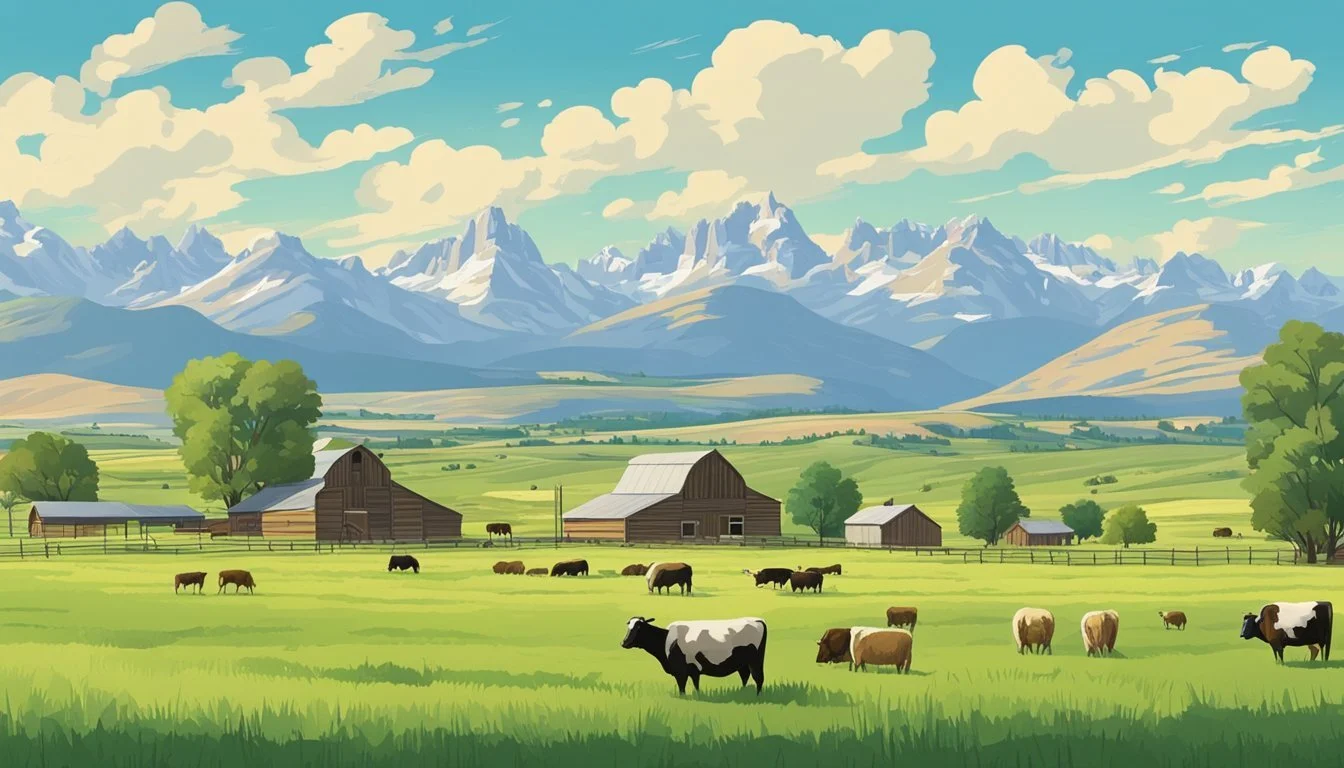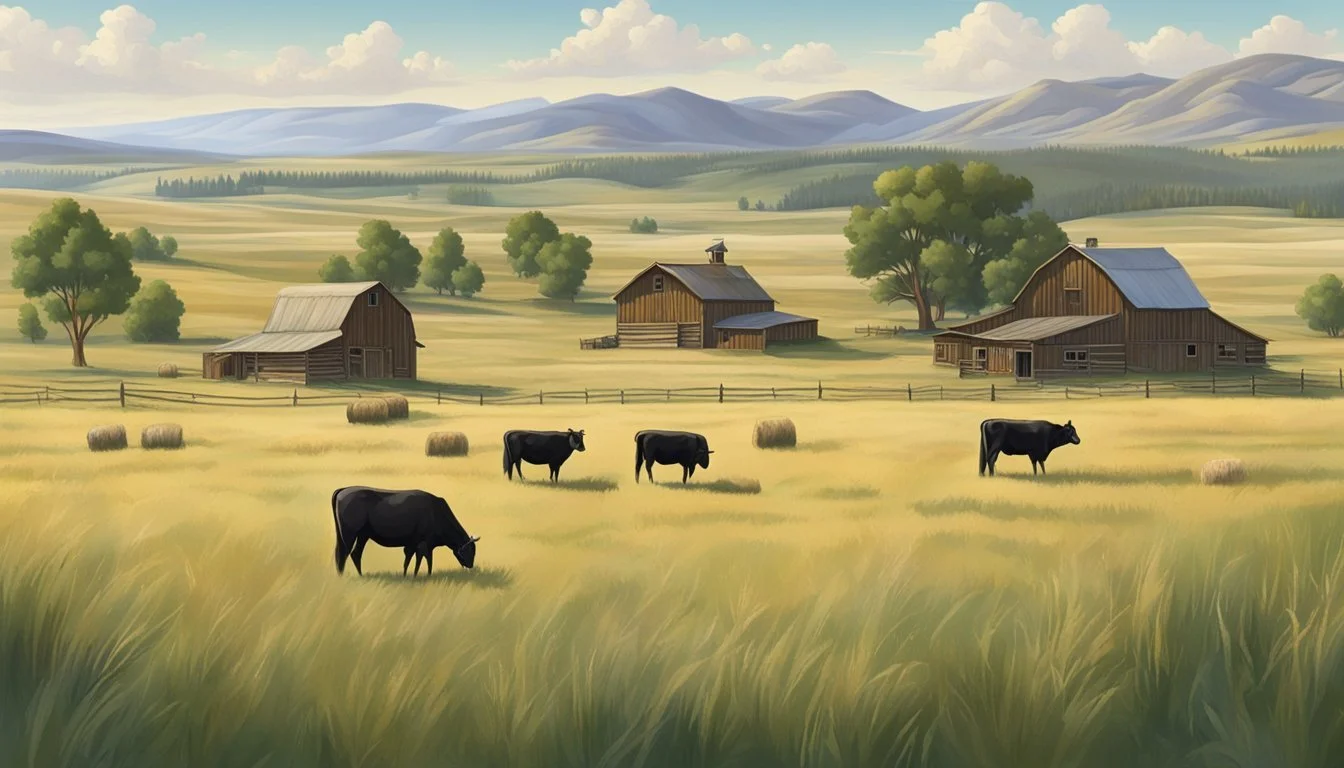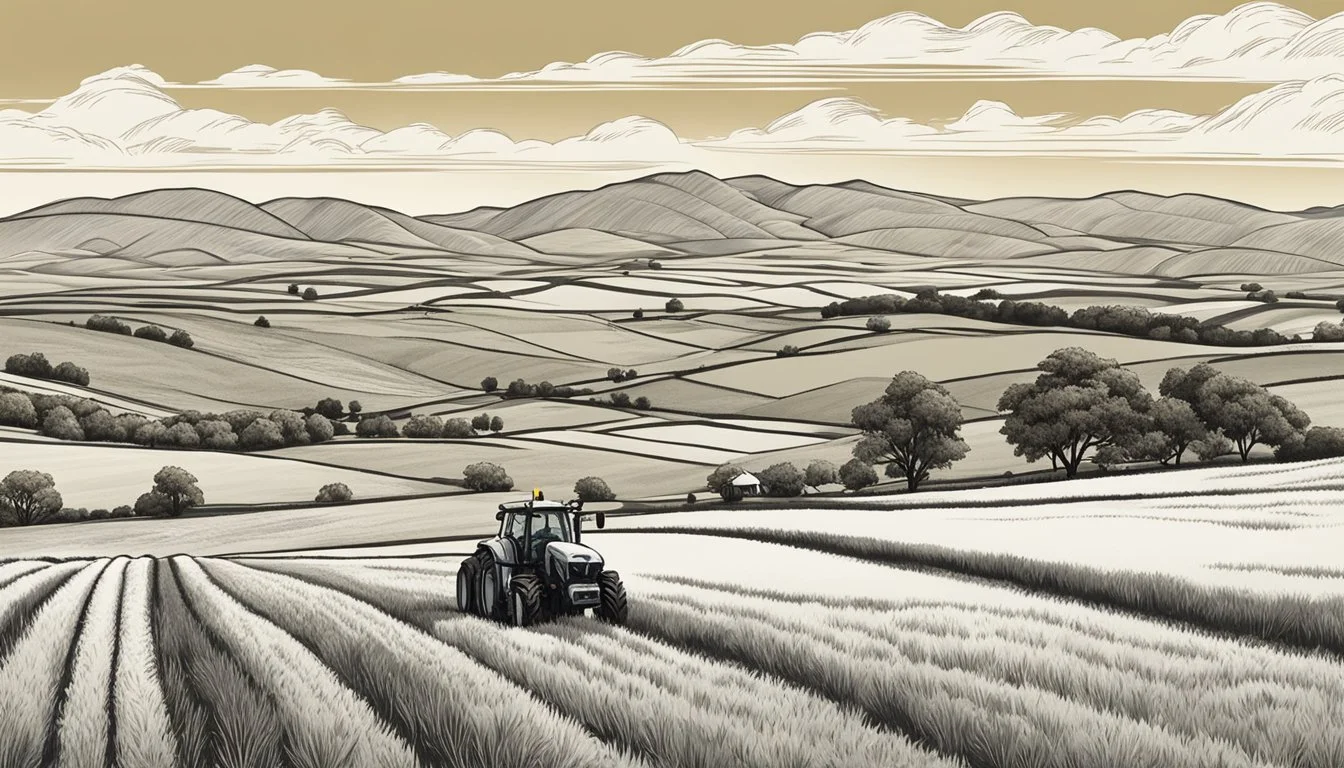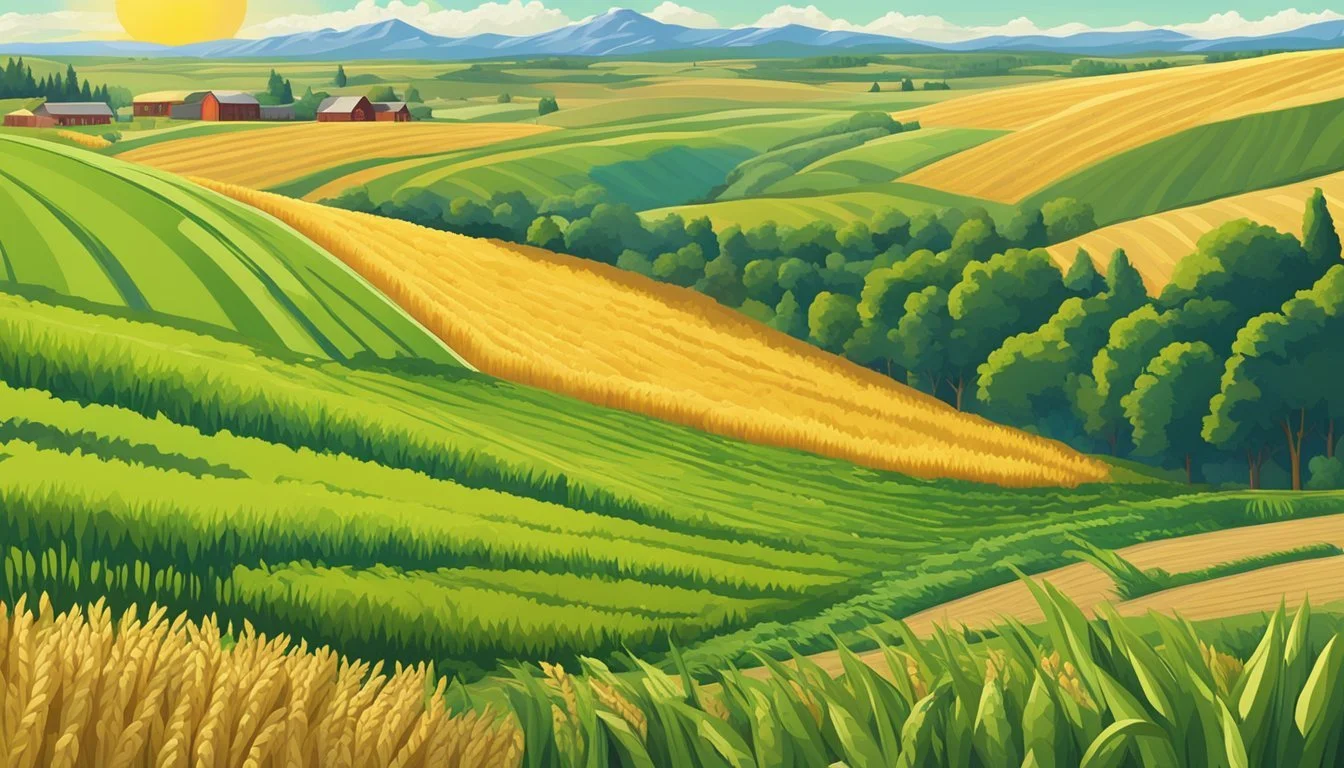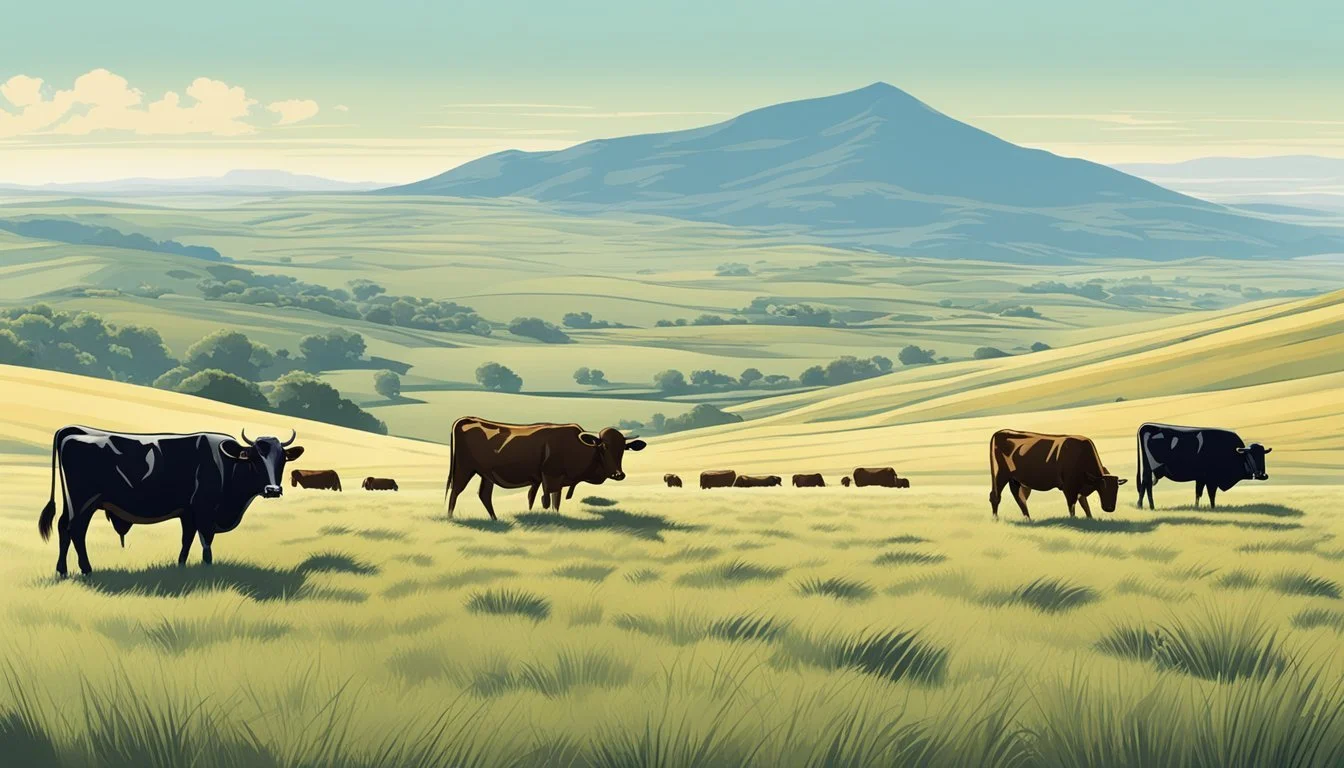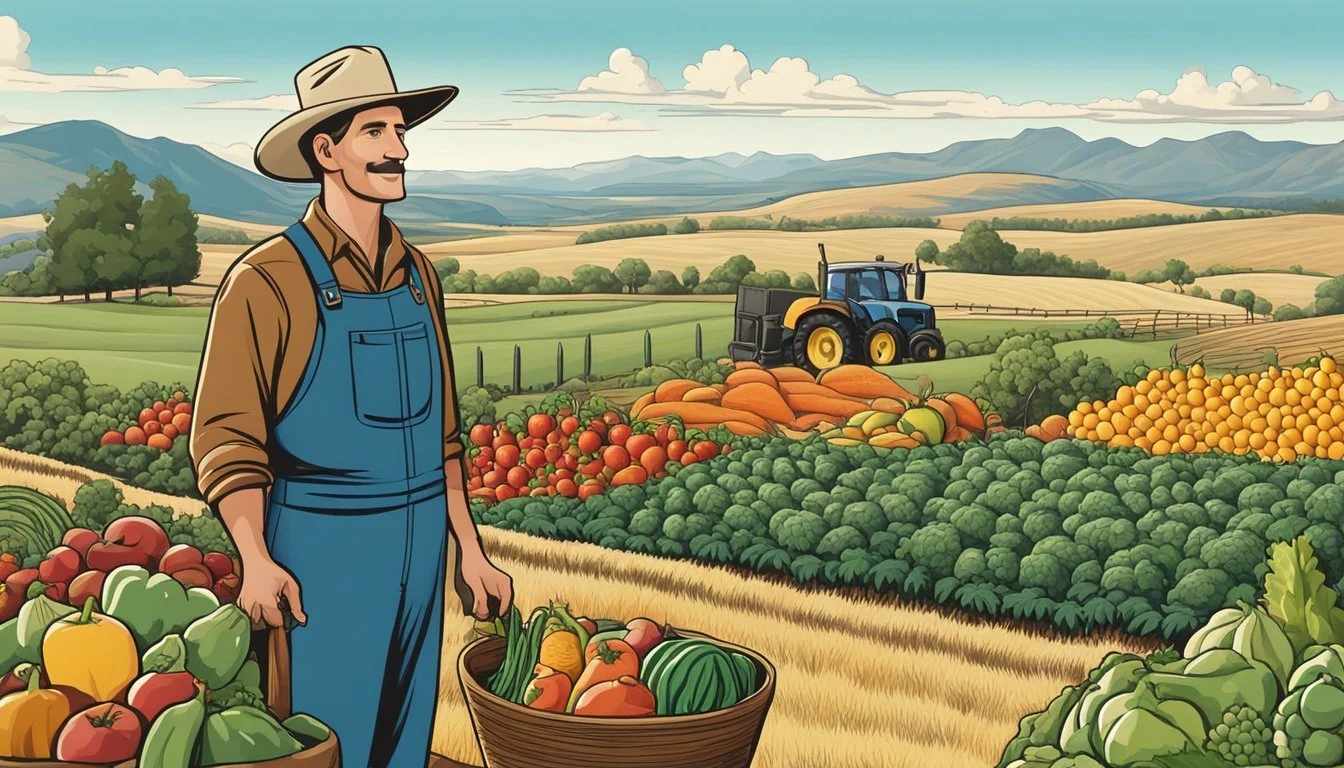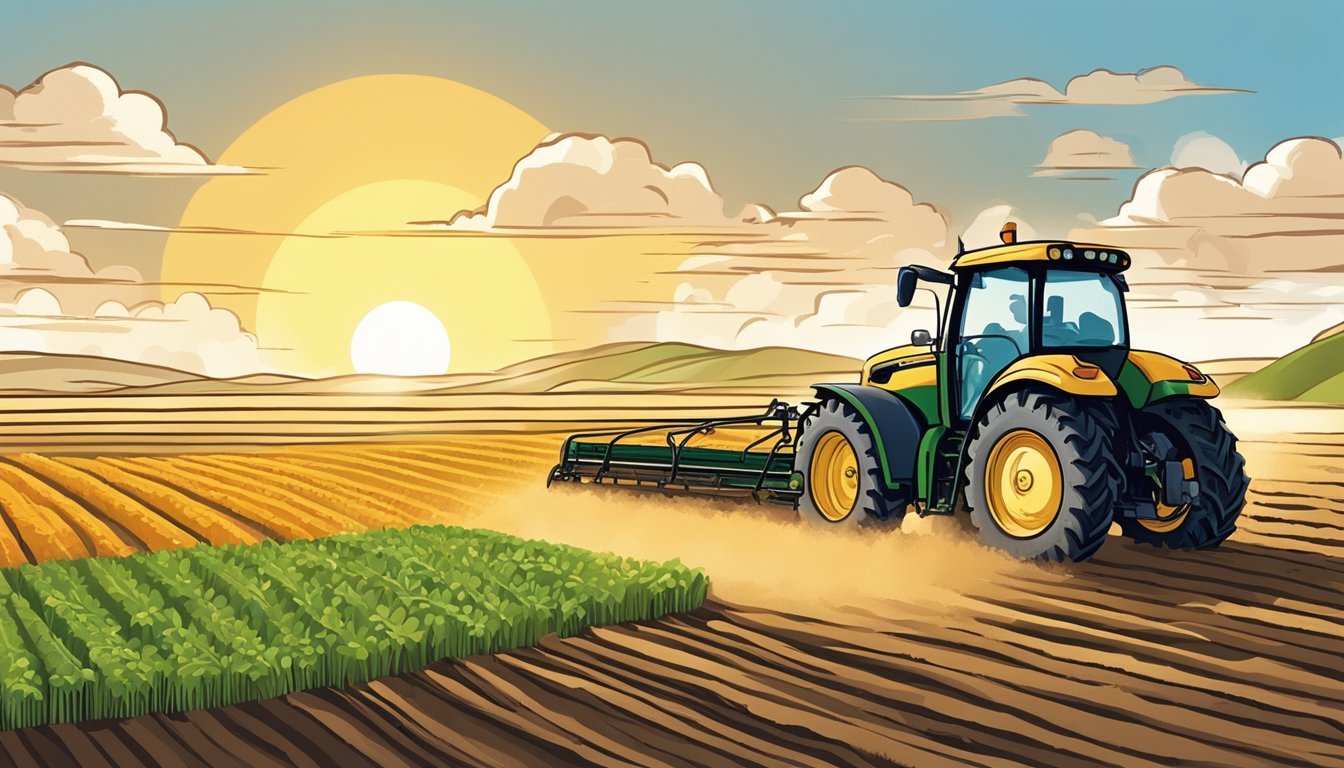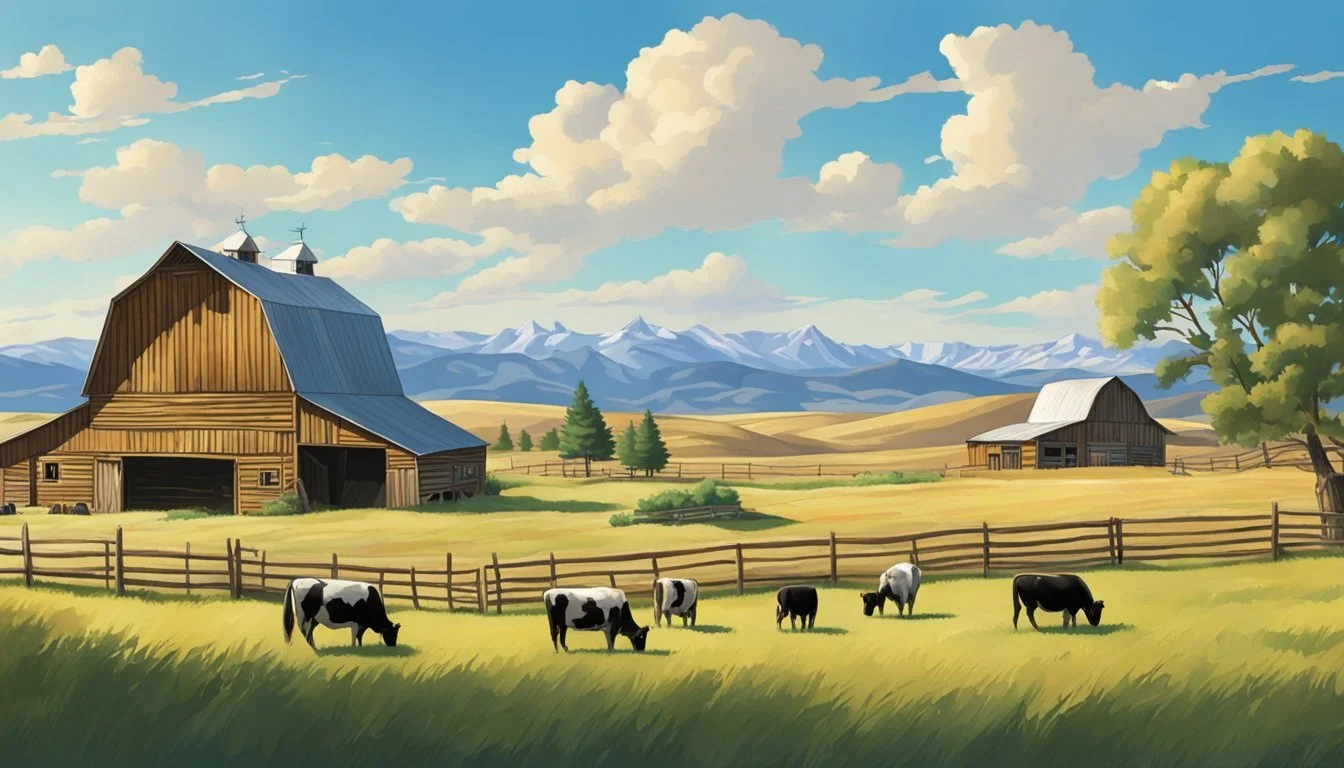Guide to Farming in Wyoming
Essential Tips for Successful Agriculture
This Article is Part of Our State by State Farming Guide
Agriculture plays a pivotal role in Wyoming's economy and culture, echoing the state's rich history of farming and ranching. With its vast open spaces and large average ranch size, Wyoming's agricultural sector is not only a testament to the state's commitment to land stewardship but also a significant contributor to its financial health. This guide aims to provide valuable insight into farming within the state, offering a roadmap for both new and seasoned farmers looking to navigate the unique agricultural landscape Wyoming presents.
When considering crop cultivation in Wyoming, the state's climate and environment dictate successful farming practices. Rooted in a tradition that integrates with the natural rhythm of the land, Wyoming farmers often opt for hardy crops such as hay, barley, wheat, and corn. Wyoming also leads in wool production, reflecting the importance of livestock—a centerpiece of Wyoming's agricultural prowess alongside its top commodity, beef cattle.
Support systems for farmers, including a range of training resources, mentorship programs, and community networks, are fundamental to maintaining and developing Wyoming agriculture. Prospective and beginning farmers are met with web-based learning resources and interactive support designed to foster growth and innovation. With an infrastructure poised for nurturing farm ventures, Wyoming agriculture not only stands as a cornerstone of the state's economy but a promising field for the future.
History and Culture of Wyoming Agriculture
Wyoming's agriculture has significantly shaped the state's culture, contributing to its socio-economic fabric since the late 19th century. The state's history is deeply intertwined with the settlement patterns and agricultural practices of its residents.
Influence of Agriculture on Wyoming Culture
Agriculture in Wyoming has been a formidable influence on the state's culture for over a century. It was the allure of cultivating the land that drew settlers westward. As they transformed the semi-arid rangeland into productive farms, these early farmers established a way of life that resonated throughout Wyoming's history. The culture of Wyoming has been characterized by a strong connection to the land, a trait that can be traced back to the homesteading days.
Community events, local cuisines, and artistic expressions bear the marks of this agricultural heritage. Rodeos, county fairs, and 4-H clubs celebrate the skills and competencies that arose from the day-to-day demands of farming and ranching in Wyoming. This agricultural focus has cemented a culture of self-reliance and community coherence that persists to this day.
Economically, agriculture has been a cornerstone of Wyoming's development. The state's vast grasslands have favored livestock production, particularly beef cattle, which has consistently been the most significant contributor to the industry. This focus on livestock has influenced dietary preferences, local economic strategies, and has been a defining aspect of the state's identity.
The culture of agriculture in Wyoming is also evident in the state's commitment to land stewardship. Wyoming's farmers and ranchers have historically been invested in sustaining the open spaces that are iconic to the region. This dedication is reflected in their support for conservation practices and the integration of agriculture with the natural landscape. The state has a legacy of preserving the land, not merely as an economic resource but as a cultural treasure.
Getting Started in Wyoming Farming
Those looking to begin a farming venture in Wyoming must consider local agronomic conditions, understand the region's plant hardiness zone, and seek out programs designed for beginning farmers that provide crucial support.
Assessing Local Conditions
In Wyoming, one must assess the semi-arid climate and varying soil conditions across the state. Wyoming's agriculture benefits from web-based learning resources which guide on starting and managing an enterprise, especially for new and beginning farmers and ranchers (NBFR). These resources help in evaluating local market opportunities and agricultural practicability.
Understanding Wyoming's Hardiness Zone
Knowing Wyoming's hardiness zone is essential for crop selection and planting schedules. Wyoming primarily falls within USDA hardiness zones 3 through 5, indicating a growing environment with potentially cold temperatures and a short growing season. This information shapes planting decisions and the management of perennial plants.
Beginning Farmers Programs
Wyoming offers education, mentoring, and technical assistance through various programs for beginning farmers. These initiatives aim to provide the knowledge, skills, and tools needed to make informed decisions, enhance sustainability, and understand risk management alternatives. They ensure well-informed Wyoming beginning producers are equipped to capitalize on these supports.
Farm Operation Essentials
Before embarking on the journey of farming in Wyoming, it is crucial for prospective farmers to meticulously organize their farm operations. Key components such as comprehensive planning and astute budgeting, along with an inventory of land and natural resources, serve as foundational pillars for a successful agricultural venture.
Farm Planning and Budgeting
Farm planning begins with setting clear objectives and mapping out the necessary steps to achieve them. A farmer should:
Identify the farm’s primary commodities or livestock.
Determine the scale of operation.
For budgeting, it is essential to:
Estimate costs (fixed and variable) associated with crops and livestock.
Forecast revenue based on market research and yield projections.
The use of a spreadsheet or farming software can aid in tracking income and expenses, while also facilitating adjustments to the plan as needed.
Land Management and Resource Inventory
Proper land management starts with understanding the soil type, topography, and climate of the farmland. Farmers should:
Assess soil quality through testing.
Develop a rotation plan that enhances soil health.
Creating a resource inventory involves:
Cataloging existing assets, such as machinery, irrigation systems, and buildings.
Mapping out water sources and evaluating the availability and quality for both irrigation and livestock.
A farmer must also remain vigilant about the sustainability practices in regulating the use of natural resources to ensure long-term productivity and compliance with environmental standards.
Crops and Produce
Wyoming's agricultural landscape is robust, primarily featuring a range of staple crops that form the backbone of its rural economy. The state is renowned for producing high-quality hay, which notably contributes substantially to the local economy. Additionally, weather conditions in Wyoming support the cultivation of various other crops and vegetables, with certain species favoring the state's unique climate.
Popular Wyoming Crops
Wyoming's agricultural outputs are diverse, with hay topping the economic contribution list. However, critical staple grains such as corn, barley, and wheat are also extensively cultivated. These crops benefit from Wyoming's high-altitude environments and relatively dry climate, which can result in better yields and lower disease incidence.
Corn: Primarily used as livestock feed and for ethanol production.
Barley: Grown for both animal feed and malt production.
Wheat: A significant crop that is often exported out-of-state.
Vegetable Farming and Harvest Timing
Vegetable farming in Wyoming adheres to strategic planting and harvest timing to accommodate the cool-season climate. Farmers must maximize the shorter growing seasons and optimize plant hardiness to ensure successful yields.
Lettuce: Known for its cold hardiness, it can be planted during the cool spring and fall months. This makes it a low-maintenance crop suitable for Wyoming's climate.
Popular Varieties: Butterhead, Boston, Loose Leaf
Harvest Timing: Lettuce can be harvested before the onset of the hot summer months or after the first frost in late fall.
Other vegetables suited to the Wyoming climate include root vegetables and hardy leafy greens, which can be planted and harvested in alignment with the state's variable weather patterns, optimizing both yield and produce quality.
Livestock Farming
Livestock farming is an integral sector of Wyoming's agricultural industry, with cattle and beef production leading the way. The state's geography offers vast grasslands conducive to livestock grazing, which supports a thriving farming culture.
Cattle and Beef Production
Cattle farming represents the cornerstone of Wyoming's livestock operations. In 2008, cattle producers generated over $500 million, indicating the significant role of beef in the state's economy. Wyoming's cattle farms are known for their size and contribution to the state's agricultural output. Economically, these operations are vital, anchoring the value of production within the agricultural sector. The cattle and beef industry in Wyoming not only supports the local economy but also affords a pathway for continuity and growth as ranch sizes increase and younger producers enter the field.
Wyoming's agriculture overview for 2022 encapsulates farm operations, livestock inventory, and both milk and beef production, focusing on aspects like yield and production value. It's a landscape where large-scale cattle operations are prevalent.
Average ranch size: First in the country
Beef production value: $500 million+
Key focus: Yield and production size
Sheep and Hog Rearing
While cattle might take the spotlight, sheep and hog rearing remain indispensable parts of Wyoming's farm culture. These practices highlight the diversity of livestock farming and contribute significantly to the state's agricultural fabric. The rearing of sheep and hogs complements existing cattle operations, offering farmers a varied source of income and products. Sheep farming, in particular, is an established part of Wyoming's heritage, with wool and meat production contributing to both the state's economic and cultural landscapes.
Livestock farmers in Wyoming leverage tools such as Break-Even Budget and Valuation tools to make informed decisions regarding market timing and livestock value assessments. These tools are critical for enhancing the farmers' ability to manage their herds effectively while optimizing their financial outcomes.
Sheep: Integral to the state's agricultural heritage
Hogs: Provide another layer to the farming economy
Tools used: Break-Even Budget, Bull and Cow Valuation tools
Livestock farming in Wyoming is a testament to the resilience and adaptability of its farmers, ensuring the state remains at the forefront of efficient and productive agricultural practices.
Marketing and Selling Agricultural Products
Successful marketing and selling of agricultural products in Wyoming requires an understanding of local markets and effective strategies. Producers must navigate the landscape to reach consumers and ensure their business thrives.
Local Markets and Selling Channels
Local markets in Wyoming provide producers with various channels to sell their products. Farmers can take advantage of farmers' markets, which are popular locales for selling fresh produce, meats, and other farm products directly to consumers. Another avenue is through Community Supported Agriculture (CSA) programs, where consumers buy shares of a farm's harvest in advance. Producers may also partner with local grocery stores or co-ops that are interested in sourcing high-quality, local products. Additionally, online marketplaces have opened up digital channels for farms to reach a broader audience.
Farmers' Markets: Direct consumer engagement, immediate feedback.
CSA Programs: Stable revenue stream, customer loyalty.
Local Retail Partnerships: Greater reach within the community, potential for consistent sales.
Online Sales: Expanded market access, convenience for both seller and buyer.
Agriculture Marketing Strategies
Effective marketing strategies are essential for agricultural producers to differentiate their products and reach their target audience. Branding is a powerful tool, assisting in creating a recognizable identity for farm products. This can involve developing a strong logo, consistent product packaging, and a compelling narrative. Social media marketing is also crucial, as platforms like Facebook and Instagram allow farms to share stories, updates, and engage with their customers. Implementing SEO (Search Engine Optimization) can enhance online visibility and drive consumer traffic to websites and product listings. Finally, understanding and exploiting niche markets, such as organic or specialty products, can lead to higher margins and dedicated consumer bases.
Branding: It establishes trust and recognition.
Social Media: Engages with the community, increases visibility.
SEO: Boosts online presence, attracts organic traffic.
Niche Marketing: Targets specific consumer segments, often willing to pay a premium.
Support and Resources
Farming in Wyoming is supported by a robust network of resources and programs tailored to assist farmers and ranchers. These resources provide vital support for business development, stress management, and education in agricultural practices.
Governmental Support and Grants
The Wyoming Department of Agriculture partners with various federal and state entities to offer support and financial assistance through grants and programs. One notable program is the Farm & Ranch Stress Assistance Network, designed to help those in the industry cope with unique stressors by connecting them with relevant resources and services. Additionally, the U.S. Department of Agriculture (USDA) facilitates assistance, like the Big Game Conservation Partnership, offering agricultural producers in Wyoming opportunities to apply for critical support.
Educational Resources at UW Extension
The University of Wyoming Extension serves as a key educational resource, offering diverse materials to support the state's agricultural community. Farmers and ranchers can access a wealth of knowledge through videos, expertly-crafted presentations, and specialized online resources that cover a broad range of topics. The UW Extension's innovative approach includes interactive support, such as mentorship and coaching services, to impart practical and strategic farming acumen.
Agricultural Best Practices
Proper management practices in agriculture are crucial to sustain and enhance productivity while preserving the environment. This involves strategic use of pesticides, careful handling of natural resources, and a commitment to environmental stewardship.
Pesticide and Environmental Management
Pesticide Use: Farmers in Wyoming apply pesticides to protect crops from pests and diseases. Adherence to label recommendations and regulated usage is critical to prevent environmental contamination and to safeguard non-target species. They often employ Integrated Pest Management (IPM) strategies that combine biological, cultural, physical, and chemical tools to minimize pesticide reliance.
Environmental Safety: When applying pesticides, farmers must consider the potential impacts on surrounding ecosystems. This includes:
Buffer Zones: Establishing areas where no pesticides are applied near sensitive habitats.
Application Timing: Choosing times that reduce the risk to beneficial insects, such as bees, and to wildlife.
Equipment Calibration: Regularly checking and adjusting equipment to ensure accurate application rates.
Water Resources: Responsible irrigation techniques and water conservation are essential as Wyoming's agriculture depends on its natural water resources. Techniques include:
Drip Irrigation: Targeted watering to reduce runoff and evaporation.
Scheduled Irrigation: Watering based on soil moisture levels and weather forecasts to use water efficiently.
Soil Conservation: Maintaining soil health is a priority. Farmers implement measures such as:
Cover Crops: Utilized to enrich soil fertility and structure, thereby reducing erosion.
Crop Rotation: This practice breaks pest and disease cycles and enhances soil nutrients.
By following these best practices, Wyoming's farmers can ensure that the state continues to be a productive and sustainable agricultural region.
Agricultural Events and Community
Wyoming’s commitment to agriculture is evident through events that celebrate the state's rich farming heritage and tight-knit community spirit.
Local Farming Events
Wyoming hosts a variety of agricultural events that serve to promote the state’s farming culture and bring together Wyoming farmers and others in the community. An important annual initiative is the "Ag Books for Kids" program, aimed at educating the state’s elementary children about agriculture and the pivotal role of farmers and ranchers in supporting Wyoming's economy and culture. Additionally, various scholarships and educational events, such as the Wyoming Farm Bureau Federation Scholarship, have deadlines in March and are significant to farming students pursuing agricultural careers.
Local associations create spaces for knowledge sharing and networking among agricultural professionals. For instance, informative talks and podcasts increasingly play a role in how farmers and ag-businesses communicate and share insights. This exchange of information is crucial for staying updated with agricultural trends and maintaining a vibrant community culture focused on sustainable farming and ranching practices.
Concluding Remarks
The landscape of agriculture in Wyoming presents a unique blend of challenges and opportunities. Prospects for the state's agriculture are multifaceted, heavily influenced by practices such as dry farming, which adapts to the semi-arid climate. They have seen a transformative evolution, with operations scaling up and incorporating younger producers, leading to greater economic returns.
Key Highlights:
Young Producers Impact: Farms and ranches involving young producers generally operate on larger scales and show increased earnings, suggesting a vibrant future for the state's agriculture sector.
Economic Growth: An average 13 percent increase in net farm income signifies economic resilience within the sector.
Production Specialties: Notably, Wyoming leads in wool production, a testament to its diversified agricultural outputs.
Incidence of Small-Scale Farming: Small-scale farms are integral to the community yet face considerable change due to economic and environmental pressures.
Wyoming's Right-to-Farm Legislation: The Right-to-Farm laws underscore the state's commitment to preserving agricultural vocations, despite the decrease in farmland acreage amid an increasing number of farm operations.
As consumers increasingly value sustainability and local sourcing, Wyoming's agricultural community can leverage its strong wool production and evolving farm dynamics to meet these demands. Overall, while there are challenges, the proactive involvement of young farmers and legislative support ensure that Wyoming's agricultural domain remains robust and poised for future advancement.


